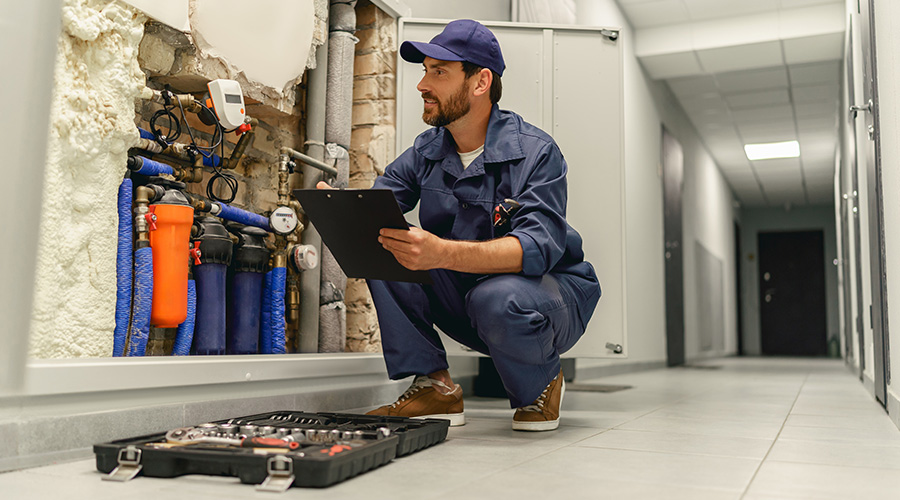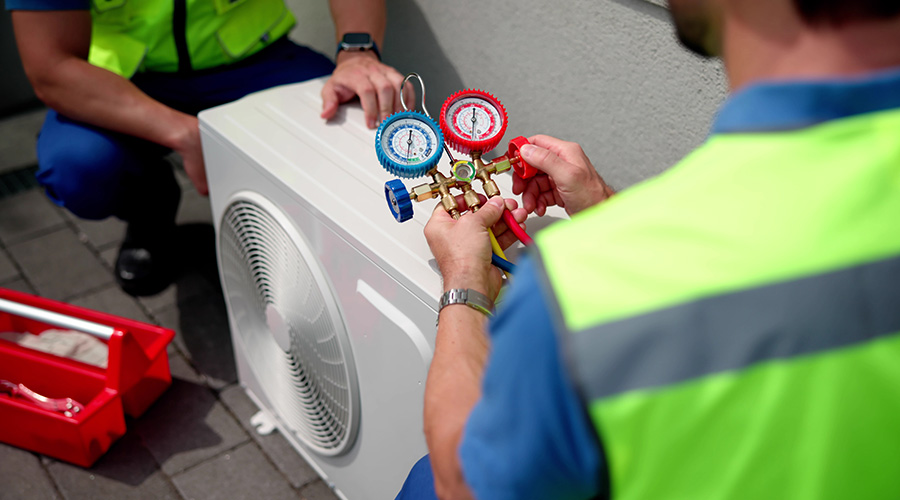A growing backlog of capital renewal projects for critical infrastructure is undermining the efforts of hospital systems nationwide by eroding reliability and financial stability. Facility components ranging from HVAC and electrical equipment to plumbing systems become even more difficult to repair as they age and fail.
The longer the equipment degrades, the higher the costs in dollars, downtime and operational risk. The challenge for healthcare facilities managers is that these assets do not generate revenue, and capital expense budgets are already spoken for.
By using the energy-as-a-service (EaaS) model, managers can use future energy savings to fund infrastructure improvements. The process converts necessary upgrades of HVAC systems, lighting, building controls and emergency generators from capital liabilities into strategic investments using operational dollars.
Turning cost avoidance into strategic reinvestment
When hospitals use EaaS to tackle maintenance backlogs, they do not just save money. They gain control. The benefits span operations and finance:
Stability replaces volatility. Proactive upgrades reduce emergency repairs and unpredictable outages.
Budgets become more predictable. Savings-based contracts align infrastructure costs with actual energy performance.
Staff productivity improves. Maintenance teams can prioritize preventive care over crisis response.
Compliance becomes easier. Upgrades help meet standards before they become urgent mandates.
This model transforms infrastructure from a deferred burden into an active source of value that supports patient care and financial planning.
From audit to action
Deferred maintenance can feel overwhelming, but it does not need to be. Facilities managers can begin reclaiming control through a phased, strategic approach that balances urgency with practicality. These six steps outline a path forward:
Benchmark aging assets. Then connect the data to clinical risks. Begin with a comprehensive audit of energy use and of asset condition and operational criticality. Map equipment age, efficiency and failure frequency against patient care functions. For example, aging air handlers serving surgical suites carry a different level of risk than those serving administrative areas. This approach helps prioritize based on utility impact and care continuity.
Related Content: Energy as a Service: Rethinking Deferred Capital Renewal
Quantify the cost of inaction, not just the cost of upgrades. Too often, upgrade proposals stall because their paybacks are not immediate. Managers can flip the script by calculating emergency repair premiums, rental equipment, temporary measures, compliance penalties, energy waste and labor hours tied to reactive maintenance. Presenting the full financial picture, including downtime risks, strengthens the case for proactive investment, especially when communicating with chief financial officers and boards.
Deferred maintenance left unattended turns minor issues into major system failures, and the backlog across U.S. healthcare facilities is approaching $400 billion, according to a 2024 ASHE survey.
Segment priorities across timeframes. Every issue does not need solving at once. Use the audit findings to develop a tiered strategy:
- Short-term, up to 12 months — immediate risk mitigation, such as failing boilers and power redundancies
- Mid-term, one-three years — systems approaching failure or with strong savings potential, such as lighting and controls
- Long-term, three-five years and longer — aging assets that still function but soon will fall out of code or efficiency standards.
This staggered approach balances urgency with budget realities and staff capacity. Eighty percent of facilities managers cite aging infrastructure as their leading concern, per the ASHE survey, making prioritization essential.
Leverage flexible financing models like EaaS to close the gap. Once priorities are clear, managers should align them with financing options that match their scale and timeline. The EaaS model can be effective for bundling high-impact, high-efficiency projects that generate measurable savings. Those savings become the funding mechanism, allowing hospitals to move forward on multiple fronts without waiting on limited capitol expenditures.
Establish internal alignment across departments. Facilities teams should not go it alone. Engaging finance, operations, compliance and sustainability leaders early ensures that infrastructure goals align with broader system objectives. For example, energy-efficient upgrades often support ESG targets, reduce insurance liabilities and streamline regulatory reporting. Cross-departmental buy-in also accelerates decision-making and smooths implementation.
Implement a performance measurement framework. Too many infrastructure projects succeed technically but fail to demonstrate impact because performance is not tracked. Managers need to establish key performance indicators from day one: energy savings, maintenance reductions, system uptime and even care environment metrics, including patient comfort scores and noise reduction. They can use this data to validate the approach and inform future phases of investment. Each step builds momentum — financial, operational and strategic.
Facilities leaders do not need more pressure. They need new tools. EaaS is one such tool, turning an aging infrastructure challenge into an opportunity for smarter investments.
Hospitals do not have to wait for the next chiller to fail or elevator to break down. They can use today’s utility budgets to fund tomorrow’s reliability without waiting for capital that might never come.
Deferred maintenance does not have to define the future of healthcare infrastructure. With the right strategy, it can fund it.
Caleb Haynes is vice president of business development at ENFRA — previously Bernhard — a provider of energy infrastructure and EaaS solutions.

 Skill Stacking: How Micro-Credentials Are Reshaping Trades
Skill Stacking: How Micro-Credentials Are Reshaping Trades Prima Medicine Opens New Location in Tysons, Virginia
Prima Medicine Opens New Location in Tysons, Virginia Anchorage Neighborhood Health Center Ensnared in Cyberattack
Anchorage Neighborhood Health Center Ensnared in Cyberattack Healthcare Real Estate: Responding to Shifting Patient Demands
Healthcare Real Estate: Responding to Shifting Patient Demands Over 40% of Workers Impacted by Seasonal Depression
Over 40% of Workers Impacted by Seasonal Depression